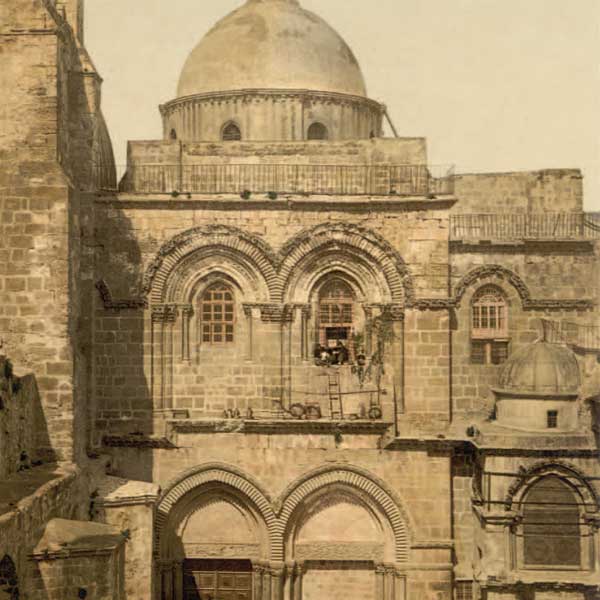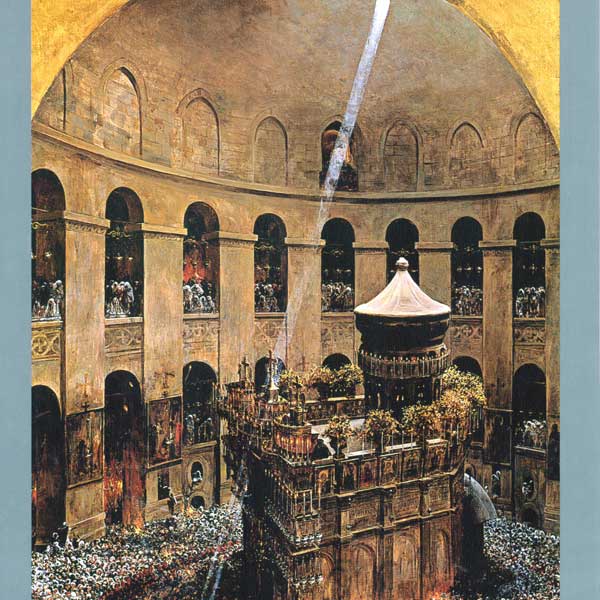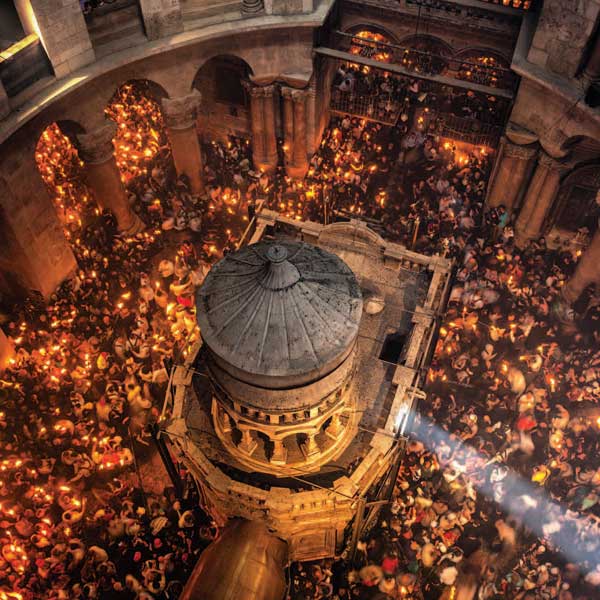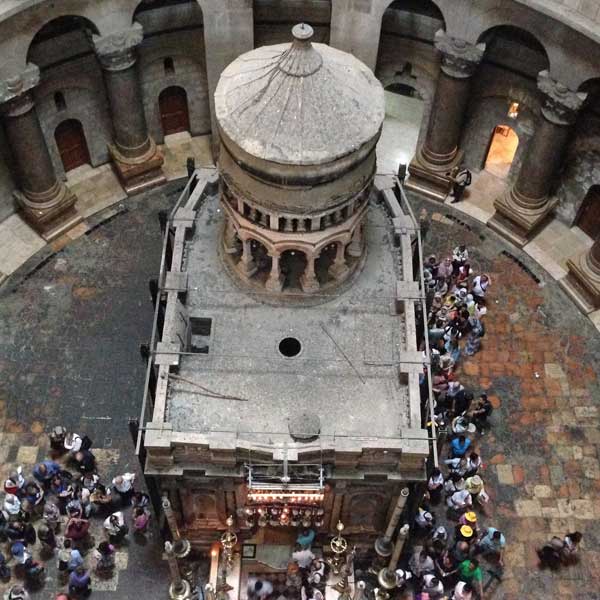Short history of the Holy Aedicule
The city of Jerusalem was founded in 3500 BC. The city of David hosts, over the centuries, through successive conflicts and reconciliations, destructions and restorations, the most sacred pilgrimage sites of all religions. On Temple Mount, the first Jewish Temple was built around 950 BC by King Solomon; there the Second Temple was rebuilt. The remnant of the Second Temple, the Western Wall, is today the most sacred pilgrimage site of Judaism. At the same site, in Haram al-Sharif, stands the golden Dome of the Rock, where the Prophet Muhammad is worshiped. Within the walls, in the Old City of Jerusalem, the Church of Resurrection was built by Constantine the Great and Saint Helena in 325 AD, enclosing the Tomb of Christ and the site of Crucifixion at Golgotha (Calvary).
Jerusalem has always been a crossroad for people and civilizations: coming east from Europe, by sea through Rhodes and Cyprus, north from Africa, west from Asia, it is located at the center of the tumultuous Middle East. In the Holy City of Jerusalem, two populations and three religions coexist. In the Church of Resurrection, however, the Status Quo is respected, according to which three Christian communities (the Greek Orthodox Patriarchate of Jerusalem, the Custody of the Holy Land of the Franciscan Order and the Armenian Patriarchate of Jerusalem) guard the most holy pilgrimage sites of Christianity.
The Holy Light, which the Patriarch of Jerusalem transmits on Holy Saturday, illuminates their coexistence, which, more than two centuries later, was expressed through their common agreement regarding the rehabilitation project of the Holy Aedicule of the Holy Sepulchre.


The history of the Church of resurrection begins with the Crucifixion and Resurrection of Jesus Christ. According to the ancient scriptures, both Golgotha and the Tomb of Joseph from Arimathea, where Christ was buried and resurrected, were just outside the walls of Jerusalem. When the city walls were later expanded, these great landmarks were found within the walls where the Church of Resurrection was erected.
Constantine the Great and Saint Helena, excavating the Temple of Aphrodite built two centuries earlier by the Roman Emperor Hadrian, revealed the tomb that was recognized as the Tomb of Christ, as well as the site of the Crucifixion, and built the Church of Resurrection.
The Holy Aedicule, enclosing the Tomb of Christ, evolved over the centuries, the result of successive interventions, disasters and restorations. Its current form dates back to the restoration of 1810 by Kalfa Komnenos from Mytilene.
In the center of the Rotunda of the Church of Resurrection, stands the Holy Aedicule, with an area of approximately 70m2, and a height up to its terrace corresponding to a typical twostorey residence. A dome, supported on 12 small columns, reaches even higher. The interior of the Holy Aedicule is divided into an antechamber, at its eastern part, and a tomb chamber at the west, which corresponds to the original tomb chamber, hewn in the natural rock, a significant part of which has been preserved to this day. This is actually the only preserved part of a much larger rock mass, in which the original tomb was hewn.
At its exterior, the monument adopts the architectural style of classicism, however, with elements of Central European architecture, as well as of typical Constantinople architecture of the era. At the exterior, the facades consist mainly of local compact red-hued stones. At the interior a corresponding configuration is observed, with the exception of the domes, however, with white marble from Prokonnesos prevailing. This architectural complex carries the signature by the talented Constantinopolitan architect Komnenos, responsible for the restoration of the Holy Aedicule of the Tomb of Christ, after the devastating fire of 1808.

The Roman Emperor Hadrian builds a Capitol (Capitolium) in front of the Tomb of Christ, dedicated to four divinities (Jupiter, Juno, Minerva, Venus), as a statement of domination and power.
Constantine the Great and Saint Helena discover the Tomb of Christ, which they enclose in an octagonal structure, known as the Holy Aedicule.
The Persians conquer the city of Jerusalem and infer severe damages on the Church of Resurrection.
The Patriarch of Jerusalem, Modestos, reconstructs the Church of Resurrection.
The Fatimid Caliph, al-Hakim bi-Amr Allah, conquers Jerusalem and nearly destroys the Holy Pilgrimage Sites.
The Byzantine Emperor Constantine IX Monomachos reconstructs the Church of Resurrection.
The Crusaders add an antechamber to the Holy Aedicule, known as the Chapel of the Angel, at the spot where the Angel appeared after the burial of Jesus Christ, according to the Gospels.
The Mamluks occupy Jerusalem in the name of the Sultan of Egypt and desecrate the Tomb of Christ.
The Custos of the Franciscan Order, Fra Bonifacio da Ragusa, restores the Holy Aedicule.
The architect Kalfa Komnenos restores the Holy Aedicule, giving it its present form.
The NTUA Interdisciplinary Team, under the supervision of Professor Antonia Moropoulou as scientific responsible, undertakes the rehabilitation of the Holy Aedicule of the Holy Sepulchre, based on the common agreement of the three Christian Communities, Guardians of the Holy Sepulchre.






